The SilverStone IceGem AIO Coolers Review: Going Big For Threadripper
by E. Fylladitakis on July 21, 2021 9:00 AM EST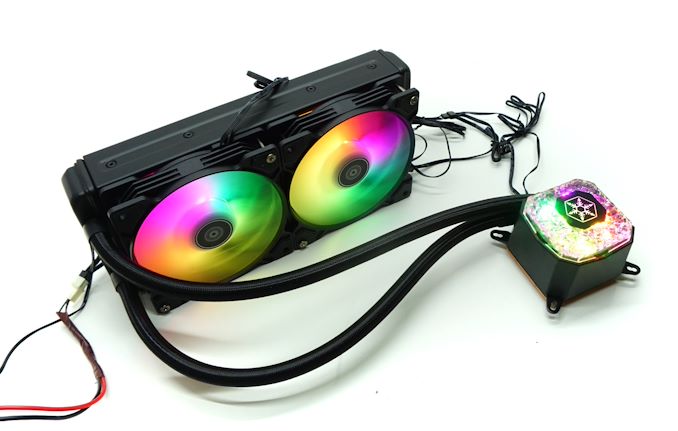
SilverStone used to be a small company that started as a designer of unique PC case designs, but today it is one of the most well-established PC component manufacturers worldwide. The company’s philosophy revolves around the design of high-quality but also cost-effective and practical products, forgoing extravagant and swanky aesthetic designs. That tactic served SilverStone very well in the past, as we've seen first-hand how the cost-effectiveness of some of their CPU coolers made for some very impressive products.
About a year ago, we had a look at SilverStone’s new AIO coolers, the Permafrost series. The Permafrost coolers were a bit of a shock on the company’s ideology as they featured RGB lighting, yet SilverStone still tried – and managed – to keep the retail price relatively low.
Thoughts on RGB lighting aside, if Permafrost did have one weakness, it's that the cooler was designed for standard consumer desktop sockets. Which is most of the self-built PC market, but not all of it – in particular, Permafrost couldn't be used on AMD's sizable Threadripper processors. So in an effort to address the Threadripper market, SilverStone has developed a successor of sorts for the Permafrost series, which they have named IceGem. IceGem takes Permafrost's bold, RGB-heavy design cues, but supersizes the pump block so that the block can properly cover the big chips.
For today’s review, we are taking a look at the complete IceGem cooler series. This covers the IceGem 240P, IceGem 280, and IceGem 360. The IceGem 240P and IceGem 360 are designed to utilize 120 mm fans, while the IceGem 280 is using 140 mm fans.
While the IceGem coolers are first and foremost promoted for their socket sTRX4 (Threadripper) compatibility, the coolers can also be used with all of the mainstream sockets, including Intel's LGA 1200 and 2066 sockets, as well as AMD's AM4. And, though not officially listed by SilverStone, the IceGem coolers should also work with the recently-launched WRX80 (Threadripper Pro), since EPYC/TR/TR Pro all share the same socket and cooler mounting dimensions.
But besides enabling Threadripper compatibility, does the IceGem's large cooling block bring any other advantages to the AIO cooler? To get the answer to that, we are thermally testing SilverStone’s latest AIO coolers and check where they stand against the competition, as well as against each other.
Packaging & Bundle
We received SilverStone’s latest AIO coolers in sturdy cardboard boxes that, along with the internal custom inserts, provide excellent shipping protection. The artwork on the packaging is simplistic, focused on pictures of the coolers themselves – still, that is more than enough for catching the eyes of shop shelf browsers.
All three coolers share the exact same bundle, with the sole exception being the number of fans and their wiring. Inside the box, we found the necessary mounting hardware, a small syringe with thermal paste, the necessary power and LED wiring, and an ARGB lighting controller.
At this point, we must note that the ARGB LEDs of all three coolers are compatible with most motherboards featuring addressable RGB lighting in the market right now. When the system features a compatible motherboard, the LED wiring of the AIO cooler is attached directly to the motherboard, which directly controls the RGB lighting of the cooler via the software each motherboard manufacturer provides. The included ARGB controller is meant to be used only to manually setup lighting effects with systems that do not have a compatible motherboard. It features several pre-programmed RGB lighting effects, as well as speed and brightness options, but it certainly is not convenient to open up the case each time one wants to change any lighting setting. These coolers are definitely meant to be used with compatible motherboards, where the control is performed via software.
Depending on the version of the SilverStone IceGem cooler, you will receive the respective number of 120 mm or 140 mm fans. SilverStone is using the same fans they are marketing under the Air Blazer brand. These fans feature a Hydro bearing engine for low noise and anti-vibration mounting pads. The nine narrow fins suggest that the fan is designed for high flow and low pressure, which should be fine considering the low thickness of the radiator.
The SilverStone IceGem Series AIO Coolers
As expected, the sole difference between the various IceGem AIO coolers is the radiator, with all of our samples sharing the same hoses and cooling block. The design is typical, consisting of a radiator and a cooling block joined together by two hoses. The block combines the CPU contact plate and a miniature liquid pump. The designer went with standard rubber tubes with external nylon sleeve braiding for additional protection, which are fixed on the radiator and partially adjustable on the CPU block.
When a company develops a new AIO cooler, the design efforts are usually focused on the main block assembly, as there is little room for other improvements. The main highlight about the IceGem’s cooling block is the large contact surface, which allows it to fully cover an AMD Threadripper processors. Unlike the loud advertisement of the sine wave generator used in the Permafrost series, there is little information surrounding the parts used by SilverStone’s engineers to fashion this cooling block. Still, we do not expect the quality to be any lower than that of its smaller sibling.
The top part of the main block assembly is acrylic, fashioned so as to resemble cracked ice, with RGB LEDs hidden below it. Once powered, the LEDs create a beautiful visual effect that surrounds the company’s logo and are bright enough to light up a case.
The bottom of the main block assembly reveals a sizable, square cooper block with a large orthogonal contact area. It is neither nickel-plated or polished down to a mirror finish, yet the finish is very smooth and free of imperfections. Here is where IceGem’s innovation lies – the block is just large enough to cover the entire surface of an AMD Ryzen Threadripper CPU, yet the IceGem cooler still remains compatible with mainstream modern CPUs as well.
The radiators are typical dual pass cross-flow designs, with tiny fins soldered on thin oblong tubes. This is by far the most dominant radiator design for AIO systems and rightfully so, as it offers the best efficiency within limited proportions and for the temperature differences that AIO coolers have to deal with. The IceGem 280 and 360 feature 28 mm radiators, which is typical for these kinds of designs. These coolers, when fully assembled, require a clearance of 51 mm, which is less than what most advanced PC cases provide. The IceGem P240 however features a significantly thicker 38 mm radiator – although that bodes well for the performance of the cooler, it also requires a clearance of about 62 mm and could cause compatibility problems with some case designs.
The application of RGB lighting on the IceGem cooler is very good. The fans have their LEDs placed at their centers, next to the engine, creating a fantastic diffusion visual effect on the fan’s semi-transparent blades. The top of the block mimics the visual effect of the fans and its very strong LEDs are certainly going to light up the interior of any case. If connected to a compatible motherboard, both the fans and the main block will copy the programmed lighting theme of the system. For those who do not own a compatible motherboard or just do not want to have lighting synergy between different parts, the lighting effects can be programmed from the wired controller, meaning that the user will have to open the case in order to access it.


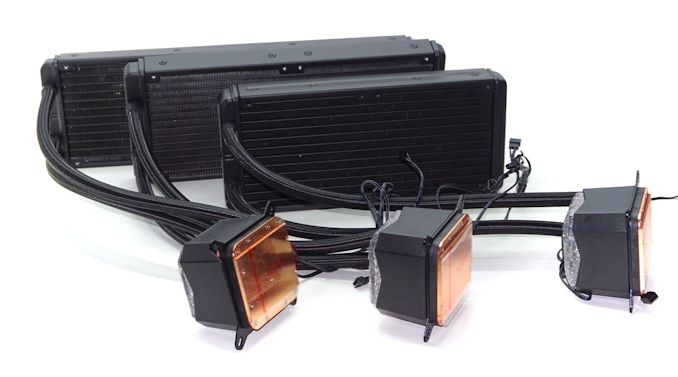
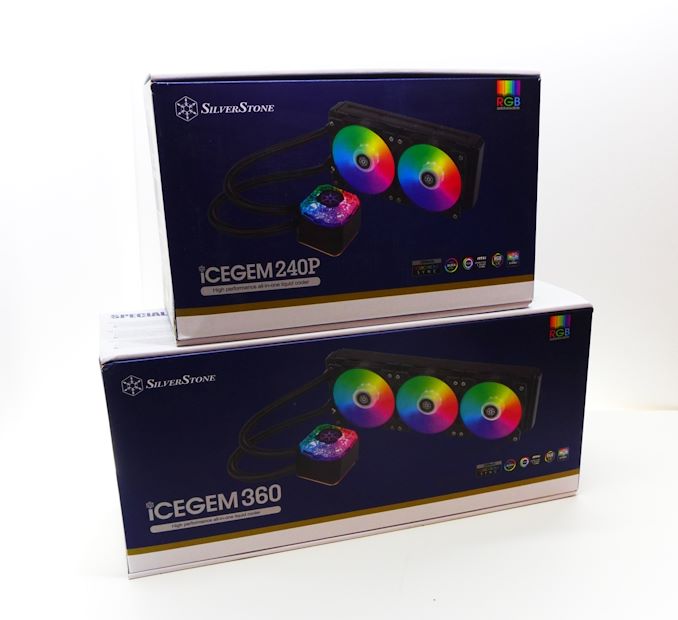

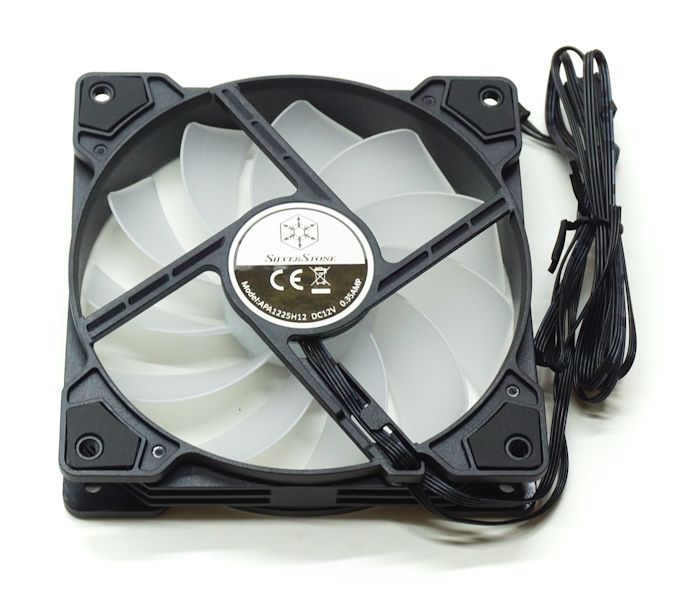
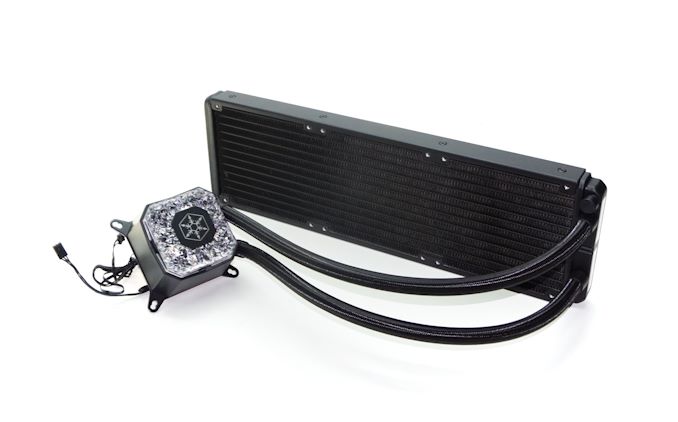
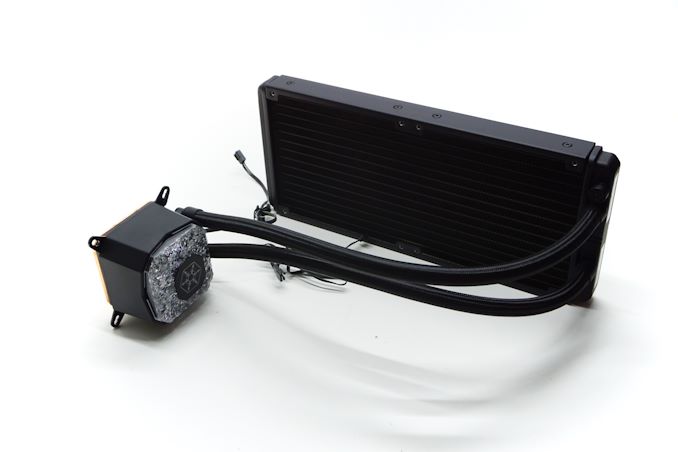
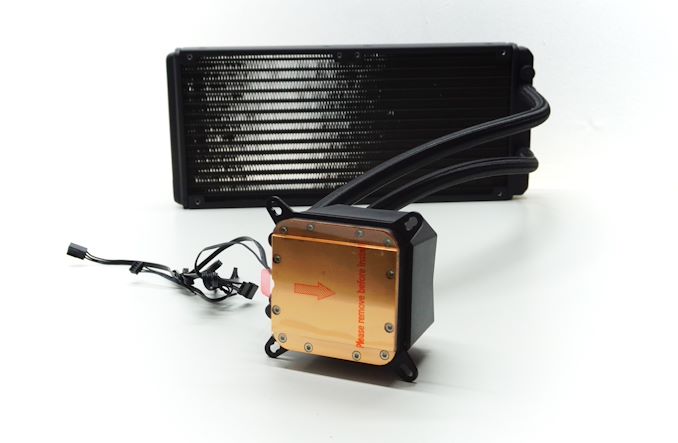
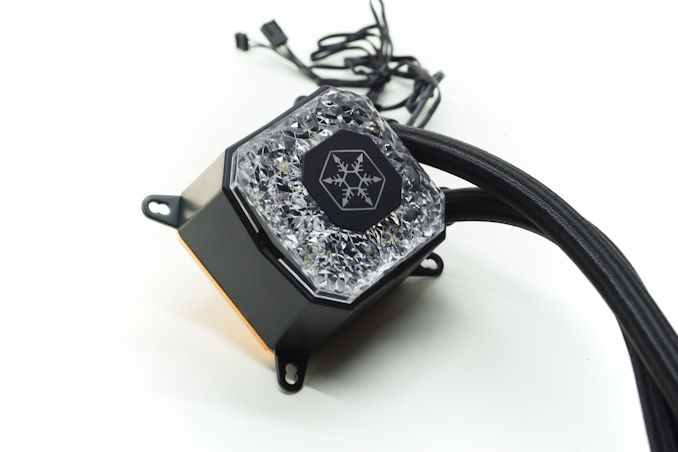
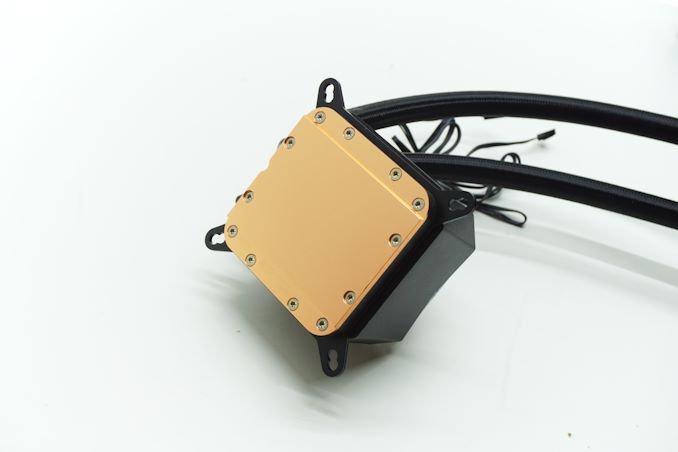
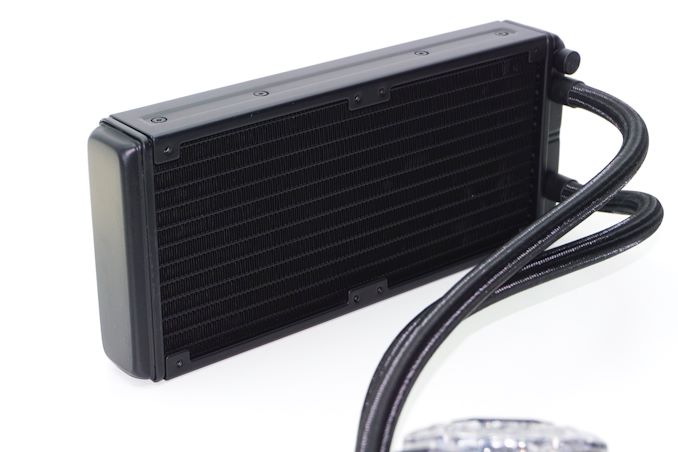
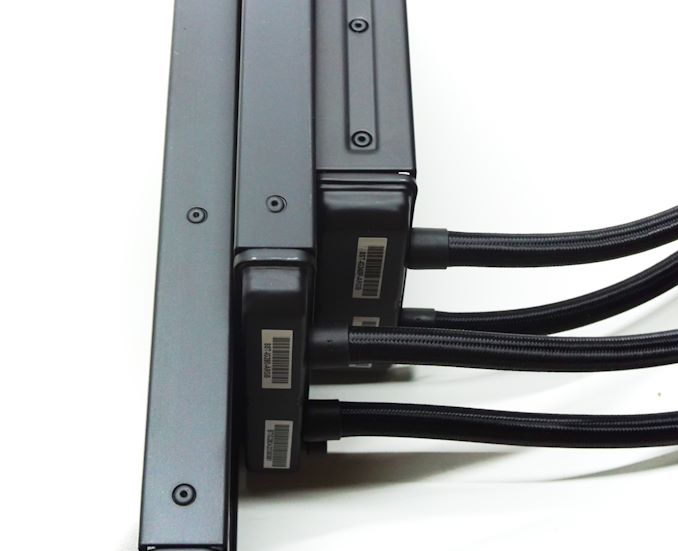
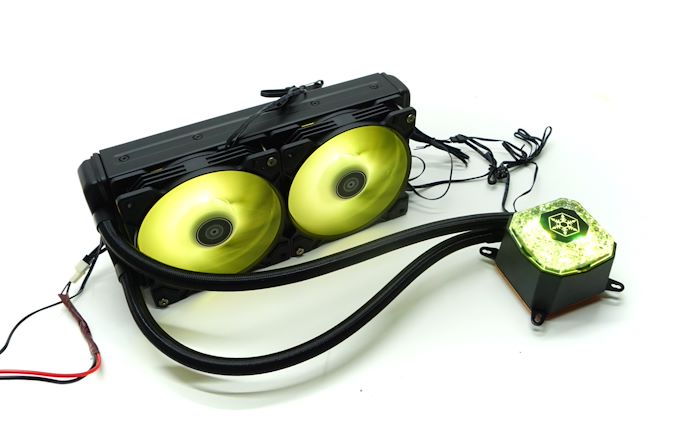










33 Comments
View All Comments
YB1064 - Wednesday, July 21, 2021 - link
RGB lights to make your eyes bleed. Who is the OEM? Do Silverstone make their own AIO?Scott_T - Wednesday, July 21, 2021 - link
my next purchase will be a completely light proof case painted internally with ultra black to suck up all the rgb crap I didnt ask for.evilspoons - Wednesday, July 21, 2021 - link
I have a Fractal Define XL R2 with opaque sides and a front door I almost always leave closed. The only light that leaks out of my case is from my 1080 with white LEDs and it works as a nice little nightlight. (I can't even remember if I left the RGB pattern on my mainboard on, I can't see it.) It's very nice that it just stays out of the way.Samus - Thursday, July 22, 2021 - link
My Silverstone AIO cooler purchased a few years ago had Asetek hose clamps, so my guess is the entire thing was sourced from Asetek. It'd be a safe guess that this is still the case today, but who knows as this 280 model is a very proprietary-sized cooler and they could have done it in-house.Threska - Wednesday, July 21, 2021 - link
Well one thing that comes to eye is the ease of installation.Oxford Guy - Wednesday, July 21, 2021 - link
Which of the models tested have proper static pressure design fans instead of case fans?meacupla - Wednesday, July 21, 2021 - link
In the article, just above the picture of the fan, it says they all use air blazer fans, which are high flow, low pressure.Considering the thickness and fin density of the radiators, I doubt using static pressure fans would make any difference.
Oxford Guy - Sunday, July 25, 2021 - link
I remember a detailed fan testing article from here (a number of years back) that made it very clear that case (airflow) fans are optimal only for very low restriction scenarios and static-oriented designs should be used for restriction, such as radiators. I would like to see a chart that changes the perspective to ‘restrictive scenarios like radiators are fine for case fans if the fins are a certain minimum width’.Oxford Guy - Monday, July 26, 2021 - link
The gaps between the fins, that is.citan x - Wednesday, July 21, 2021 - link
Sometimes, I think your testing is too theoretical and not practical enough. I just happen to be looking for a new cooler for my Threadripper CPU and have been looking at reviews. When your article mentioned Threadripper, I though I might see some good analysis on how the size of the cooling block affects cooling performance. Yet, you failed to mentioned this anywhere except for a small blurb in the introduction. Does this mean the size of the contact area does not affect the cooling performance?I find this hard to believe cause I have seen other reviews where the coolers made for Threadripper do hold some advantage over coolers that are smaller. I am looking to get good cooling performance at a low noise level. I am trying to figure out if it is worth it to go for the few coolers that are made for Threadripper or to just get one of the top performing AIO coolers. This article however failed to address that.